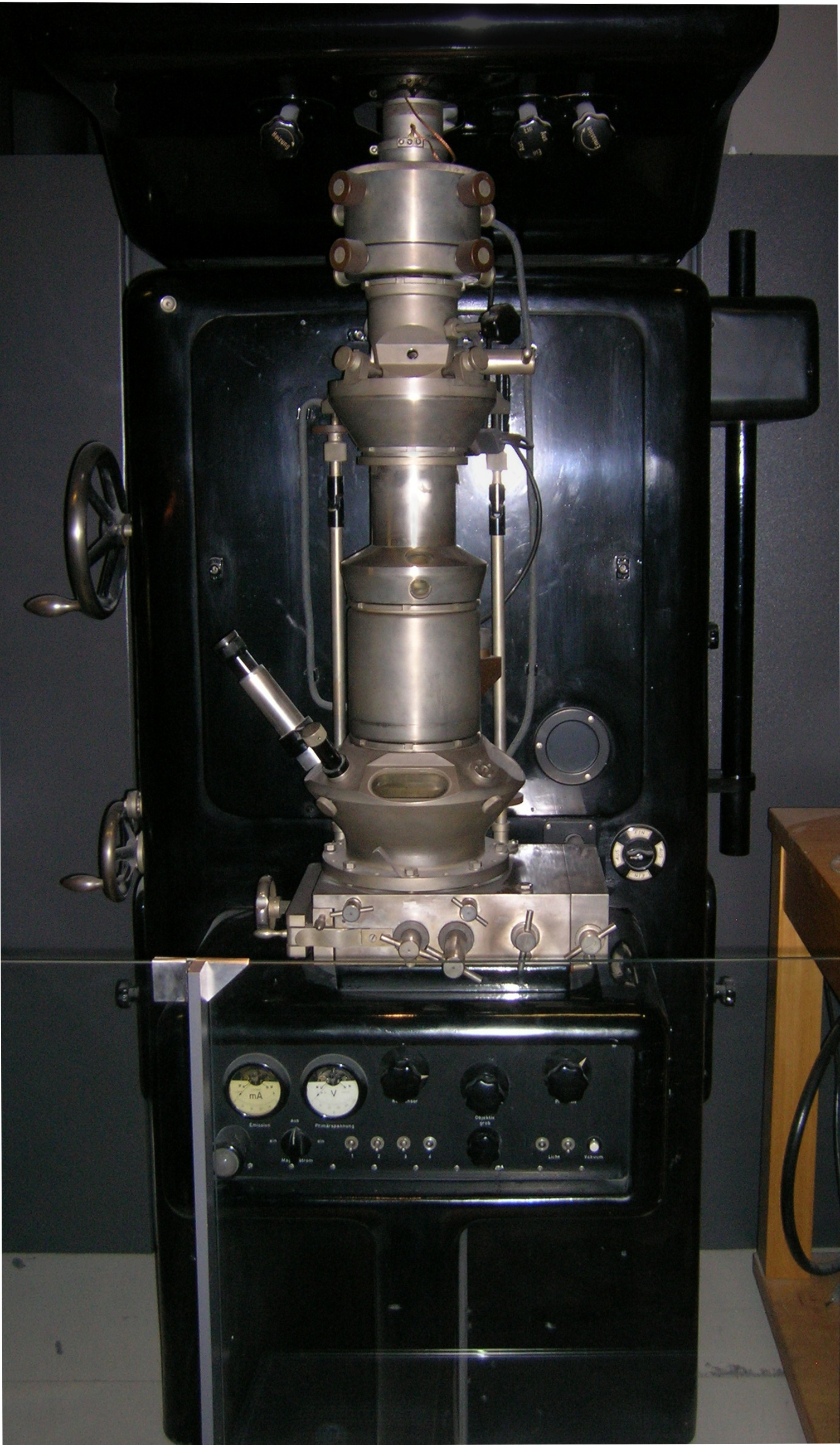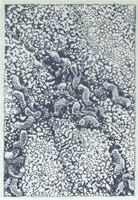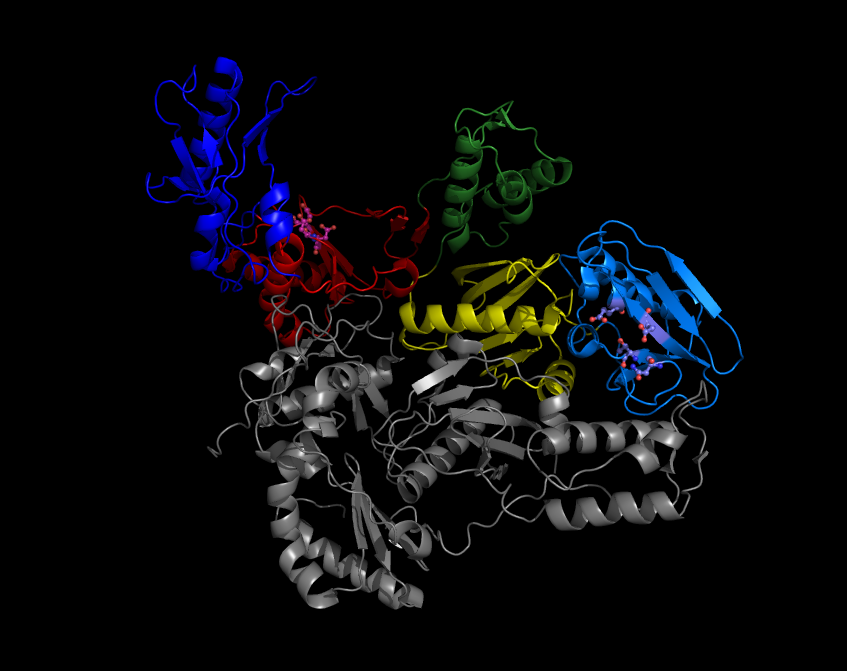|
Hepatitis B Virus
Hepatitis B virus (HBV) is a partially double-stranded DNA virus, a species of the genus '' Orthohepadnavirus'' and a member of the '' Hepadnaviridae'' family of viruses. This virus causes the disease hepatitis B. Classification Hepatitis B virus is classified in the genus '' Orthohepadnavirus'', which contains 11 other species. The genus is classified as part of the '' Hepadnaviridae'' family, which contains four other genera, '' Avihepadnavirus'', '' Herpetohepadnavirus'', '' Metahepadnavirus'' and '' Parahepadnavirus''. This family of viruses is the only member of the viral order ''Blubervirales''. Viruses similar to hepatitis B have been found in all apes (orangutans, gibbons, bonobos, gorillas and chimpanzees), in Old World monkeys, and in New World woolly monkeys (the woolly monkey hepatitis B virus), suggesting an ancient origin for this virus in primates. The virus is divided into four major serotypes (adr, adw, ayr, ayw) based on antigenic epitopes present on it ... [...More Info...] [...Related Items...] OR: [Wikipedia] [Google] [Baidu] |
Transmission Electron Microscopy
Transmission electron microscopy (TEM) is a microscopy technique in which a beam of electrons is transmitted through a specimen to form an image. The specimen is most often an ultrathin section less than 100 nm thick or a suspension on a grid. An image is formed from the interaction of the electrons with the sample as the beam is transmitted through the specimen. The image is then magnified and focused onto an imaging device, such as a fluorescent screen, a layer of photographic film, or a detector such as a scintillator attached to a charge-coupled device or a direct electron detector. Transmission electron microscopes are capable of imaging at a significantly higher resolution than light microscopes, owing to the smaller de Broglie wavelength of electrons. This enables the instrument to capture fine detail—even as small as a single column of atoms, which is thousands of times smaller than a resolvable object seen in a light microscope. Transmission electron micr ... [...More Info...] [...Related Items...] OR: [Wikipedia] [Google] [Baidu] |
New World Monkey
New World monkeys are the five families of primates that are found in the tropical regions of Mexico, Central and South America: Callitrichidae, Cebidae, Aotidae, Pitheciidae, and Atelidae. The five families are ranked together as the Ceboidea (), the only extant superfamily in the parvorder Platyrrhini (). Platyrrhini is derived from the Greek for "broad nosed", and their noses are flatter than those of other simians, with sideways-facing nostrils. Monkeys in the family Atelidae, such as the spider monkey, are the only primates to have prehensile tails. New World monkeys' closest relatives are the other simians, the Catarrhini ("down-nosed"), comprising Old World monkeys and apes. New World monkeys descend from African simians that colonized South America, a line that split off about 40 million years ago. Evolutionary history About 40 million years ago, the Simiiformes infraorder split into the parvorders Platyrrhini (New World monkeys) and Catarrhini (apes and ... [...More Info...] [...Related Items...] OR: [Wikipedia] [Google] [Baidu] |
HBsAg
HBsAg (also known as the Australia antigen) is the surface antigen of the hepatitis B virus (HBV). Its presence in blood indicates existing hepatitis B infection. Structure and function The viral envelope of an enveloped virus has different surface proteins from the rest of the virus which act as antigens. These antigens are recognized by antibody proteins that bind specifically to one of these surface proteins. The full-length HBsAg is called the L (for "large") form. It consists of a preS loop, a first transmembrane helix (TM1), a cytosolic loop (CYL), another TM helix (TM2), an antigenic loop (AGL), followed by two TM helices (TM3 and TM4). The preS loop can either be on the outside (lumen), or be located in the cytosol with the TM1 helix not actually penetrating the membrane. The M ("medium") form has a truncated preS; the part of preS1 unique to L is called preS1, while the part shared by L and M is called preS2. preS2 is always located in the lumen. The S ("small") form h ... [...More Info...] [...Related Items...] OR: [Wikipedia] [Google] [Baidu] |
Pleomorphism (microbiology)
In microbiology, pleomorphism (from Ancient Greek , ''pléō'', "more", and , ''morphḗ'', form), also pleiomorphism, is the ability of some microorganisms to alter their morphology, biological functions or reproductive modes in response to environmental conditions. Pleomorphism has been observed in some members of the Deinococcaceae family of bacteria. The modern definition of pleomorphism in the context of bacteriology is based on ''variation'' of morphology or functional methods of the individual cell, rather than a heritable ''change'' of these characters as previously believed. Bacteria In the first decades of the 20th century, the term "pleomorphism" was used to refer to the idea that bacteria change morphology, biological systems, or reproductive methods dramatically according to environmental cues. This claim was controversial among microbiologists of the time, and split them into two schools: the monomorphists, who opposed the claim, and the pleomorphists such as Antoi ... [...More Info...] [...Related Items...] OR: [Wikipedia] [Google] [Baidu] |
Reverse Transcriptase
A reverse transcriptase (RT) is an enzyme used to convert RNA genome to DNA, a process termed reverse transcription. Reverse transcriptases are used by viruses such as HIV and hepatitis B to replicate their genomes, by retrotransposon mobile genetic elements to proliferate within the host genome, and by eukaryotic cells to extend the telomeres at the ends of their linear chromosomes. The process does not violate the flows of genetic information as described by the classical central dogma, but rather expands it to include transfers of information from RNA to DNA. Retroviral RT has three sequential biochemical activities: RNA-dependent DNA polymerase activity, ribonuclease H (RNase H), and DNA-dependent DNA polymerase activity. Collectively, these activities enable the enzyme to convert single-stranded RNA into double-stranded cDNA. In retroviruses and retrotransposons, this cDNA can then integrate into the host genome, from which new RNA copies can be made via host-cell ... [...More Info...] [...Related Items...] OR: [Wikipedia] [Google] [Baidu] |
Protein
Proteins are large biomolecules and macromolecules that comprise one or more long chains of amino acid residue (biochemistry), residues. Proteins perform a vast array of functions within organisms, including Enzyme catalysis, catalysing metabolic reactions, DNA replication, Cell signaling, responding to stimuli, providing Cytoskeleton, structure to cells and Fibrous protein, organisms, and Intracellular transport, transporting molecules from one location to another. Proteins differ from one another primarily in their sequence of amino acids, which is dictated by the Nucleic acid sequence, nucleotide sequence of their genes, and which usually results in protein folding into a specific Protein structure, 3D structure that determines its activity. A linear chain of amino acid residues is called a polypeptide. A protein contains at least one long polypeptide. Short polypeptides, containing less than 20–30 residues, are rarely considered to be proteins and are commonly called pep ... [...More Info...] [...Related Items...] OR: [Wikipedia] [Google] [Baidu] |
Nucleocapsid
A capsid is the protein shell of a virus, enclosing its genetic material. It consists of several oligomeric (repeating) structural subunits made of protein called protomers. The observable 3-dimensional morphological subunits, which may or may not correspond to individual proteins, are called capsomeres. The proteins making up the capsid are called capsid proteins or viral coat proteins (VCP). The virus genomic component inside the capsid, along with occasionally present virus core protein, is called the virus core. The capsid and core together are referred to as a nucleocapsid (cf. also virion). Capsids are broadly classified according to their structure. The majority of the viruses have capsids with either helical or icosahedral structure. Some viruses, such as bacteriophages, have developed more complicated structures due to constraints of elasticity and electrostatics. The icosahedral shape, which has 20 equilateral triangular faces, approximates a sphere, while the ... [...More Info...] [...Related Items...] OR: [Wikipedia] [Google] [Baidu] |
Icosahedron
In geometry, an icosahedron ( or ) is a polyhedron with 20 faces. The name comes . The plural can be either "icosahedra" () or "icosahedrons". There are infinitely many non- similar shapes of icosahedra, some of them being more symmetrical than others. The best known is the ( convex, non- stellated) regular icosahedron—one of the Platonic solids—whose faces are 20 equilateral triangles. Regular icosahedra There are two objects, one convex and one nonconvex, that can both be called regular icosahedra. Each has 30 edges and 20 equilateral triangle faces with five meeting at each of its twelve vertices. Both have icosahedral symmetry. The term "regular icosahedron" generally refers to the convex variety, while the nonconvex form is called a ''great icosahedron''. Convex regular icosahedron The convex regular icosahedron is usually referred to simply as the ''regular icosahedron'', one of the five regular Platonic solids, and is represented by its Schläfli symbol , contai ... [...More Info...] [...Related Items...] OR: [Wikipedia] [Google] [Baidu] |
Lipid
Lipids are a broad group of organic compounds which include fats, waxes, sterols, fat-soluble vitamins (such as vitamins A, D, E and K), monoglycerides, diglycerides, phospholipids, and others. The functions of lipids include storing energy, signaling, and acting as structural components of cell membranes. Lipids have applications in the cosmetic and food industries, and in nanotechnology. Lipids are broadly defined as hydrophobic or amphiphilic small molecules; the amphiphilic nature of some lipids allows them to form structures such as vesicles, multilamellar/ unilamellar liposomes, or membranes in an aqueous environment. Biological lipids originate entirely or in part from two distinct types of biochemical subunits or "building-blocks": ketoacyl and isoprene groups. Using this approach, lipids may be divided into eight categories: fatty acyls, glycerolipids, glycerophospholipids, sphingolipids, saccharolipids, and polyketides (derived from condensatio ... [...More Info...] [...Related Items...] OR: [Wikipedia] [Google] [Baidu] |
Virion
A virion (plural, ''viria'' or ''virions'') is an inert virus particle capable of invading a Cell (biology), cell. Upon entering the cell, the virion disassembles and the genetic material from the virus takes control of the cell infrastructure, thus enabling the virus to Replication (virus), replicate. The genetic material (''Viral core, core'', either DNA or RNA, along with occasionally present virus core protein) inside the virion is usually enclosed in a protection shell, known as the capsid. While the terms "virus" and "virion" are occasionally confused, recently "virion" is used solely to describe the virus structure outside of cells, while the terms "virus/viral" are broader and also include biological properties such as the infectivity of a virion. Components A virion consists of one or more nucleic acid genome molecules (single-stranded or double-stranded RNA or DNA) and coatings (a capsid and possibly a viral envelope). The virion may contain other proteins (for examp ... [...More Info...] [...Related Items...] OR: [Wikipedia] [Google] [Baidu] |
Envelope Proteins
A viral envelope is the outermost layer of many types of viruses. It protects the genetic material in their life cycle when traveling between host cells. Not all viruses have envelopes. A viral envelope protein or E protein is a protein in the envelope, which may be acquired by the capsid from an infected host cell. Host cell infection process Numerous human pathogenic viruses in circulation are encased in lipid bilayers, and they infect their target cells by causing the viral envelope and cell membrane to fuse. Although there are effective vaccines against some of these viruses, there is no preventative or curative medicine for the majority of them. In most cases, the known vaccines operate by inducing antibodies that prevent the pathogen from entering cells. This happens in the case of enveloped viruses when the antibodies bind to the viral envelope proteins. The membrane fusion event that triggers viral entrance is caused by the viral membrane fusion protein. Many enveloped ... [...More Info...] [...Related Items...] OR: [Wikipedia] [Google] [Baidu] |
Epitope
An epitope, also known as antigenic determinant, is the part of an antigen that is recognized by the immune system, specifically by antibodies, B cells, or T cells. The part of an antibody that binds to the epitope is called a paratope. Although epitopes are usually non-self proteins, sequences derived from the host that can be recognized (as in the case of autoimmune diseases) are also epitopes. The epitopes of protein antigens are divided into two categories, conformational epitopes and linear epitopes, based on their structure and interaction with the paratope. Conformational and linear epitopes interact with the paratope based on the 3-D conformation adopted by the epitope, which is determined by the surface features of the involved epitope residues and the shape or tertiary structure of other segments of the antigen. A conformational epitope is formed by the 3-D conformation adopted by the interaction of discontiguous amino acid residues. In contrast, a linear epitope i ... [...More Info...] [...Related Items...] OR: [Wikipedia] [Google] [Baidu] |





